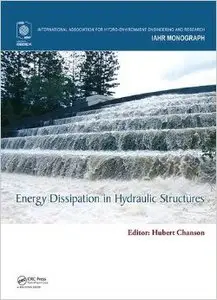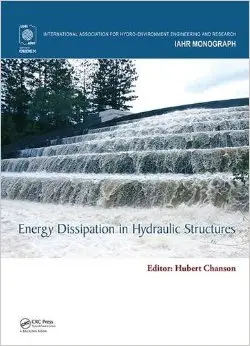Hubert Chanson, "Energy Dissipation in Hydraulic Structures"
2015 | ISBN-10: 1138027553 | 178 pages | PDF | 151 MB
2015 | ISBN-10: 1138027553 | 178 pages | PDF | 151 MB
Recent progress in technology has permitted the construction of large dams, reservoirs and channels. These advances have necessitated the development of new design and construction techniques, particularly with the provision of adequate flood release facilities. Chutes and spillways are designed to spill large water discharges over a hydraulic structure (e.g. dam, weir) without major damage to the structure itself and to its environment. At the hydraulic structure, the flood waters rush as an open channel flow or free-falling jet, and it is essential to dissipate a very significant part of the flow kinetic energy to avoid damage to the hydraulic structure and its surroundings. Energy dissipation may be achieved by a wide range of design techniques. A number of modern developments demonstrated that energy dissipation may dissipated (a) along the chute, (b) in a downstream energy dissipator, or © a combination of both.
In hydraulic engineering numerous devices like stilling basins, baffled aprons, and vortex shafts are known under the collective term of energy dissipators. Their purpose is to dissipate hydraulic energy, i.e. to convert this energy mainly into heat. Dissipators are used in places where the excess hydraulic energy could cause damage such as erosion of tailwater channels, abrasion of hydraulic structures, generation of tailwater waves or scouring. Energy dissipators are an important element of hydraulic structures as transition between the highly explosive high velocity flow and the sensitive tailwater.
This volume examines energy dissipators mainly in connection with dam structures and provides a review of design methods. It includes topics such as hydraulic jump, stilling basins, ski jumps and plunge pools. It also introduces a general account of various methods of dissipation, as well as the governing flow mechanisms.
The book will be of interest to Civil and Environmental Engineers, Hydraulic and Mechanical Engineers working in academic and professional environments.



